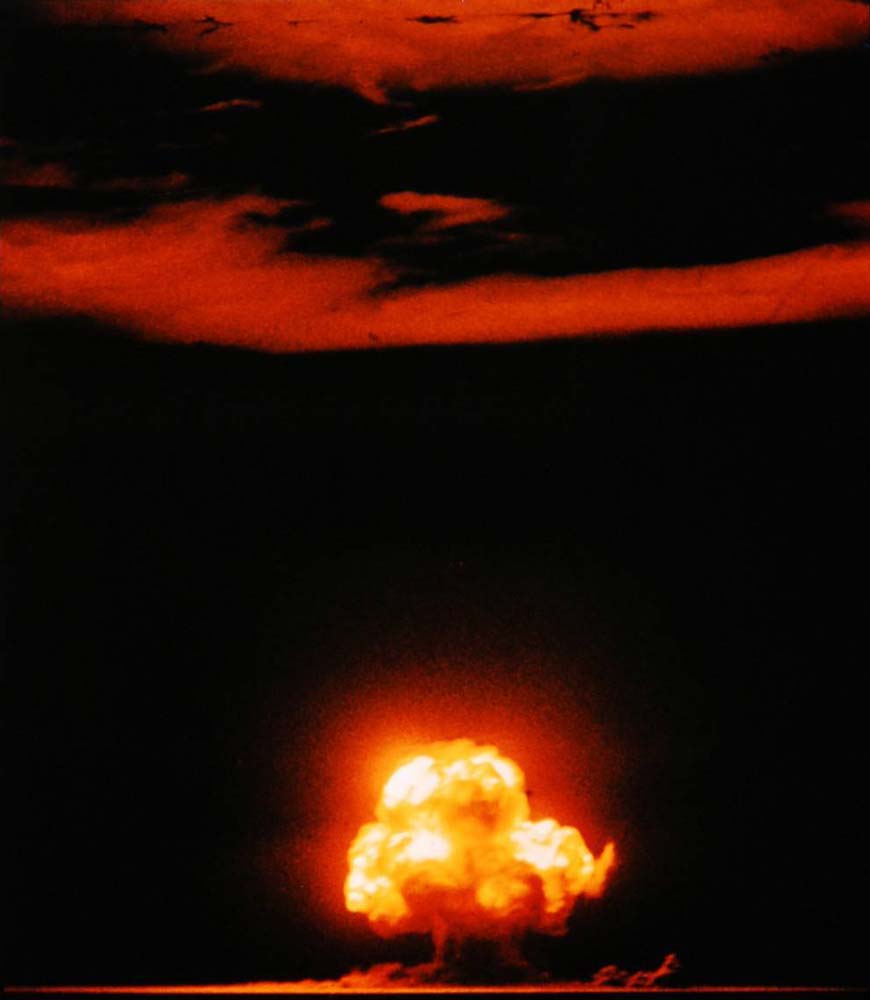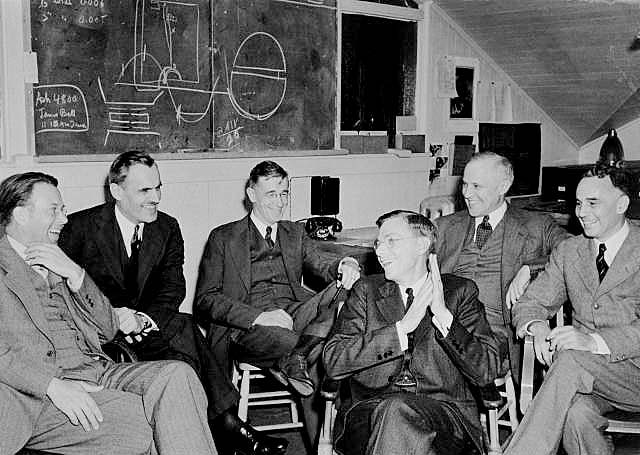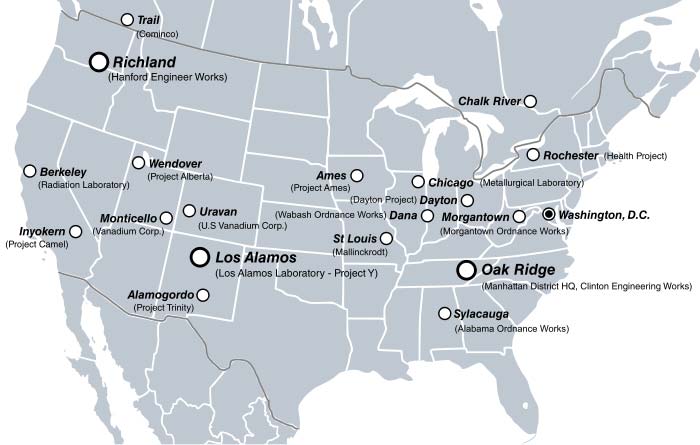 The Manhattan Project not only set in motion events that would cement the outcome of the Second World War. The Manhattan Project also changed the entire way warfare would be fought forever. It also contributed to a complete change in the global positioning of superpowers, would be superpowers and their allies.
The Manhattan Project not only set in motion events that would cement the outcome of the Second World War. The Manhattan Project also changed the entire way warfare would be fought forever. It also contributed to a complete change in the global positioning of superpowers, would be superpowers and their allies.
Of course, the original goal of the Manhattan Project (1942 to 1945) was to end World War Two. While this was the goal, not even those at the heart of the project truly realized how they would be forever changing and shaping history through their successful achievement of their goal: to develop and create functional atomic weapons.
The Splitting of the Atom
In the 1930s, it was discovered that the atom could be split in what is known as the fission process. In 1939, scores of American scientists would look for ways in which this process could be harnessed for military purposes. Ironically, many of the scientists that would work on this project were newly transplanted Europeans that had escaped fascist regimes in Europe. These scientists were now dedicating their lives to the defeat of these regimes.
The Early Stages of the Project
 The first major step in what would eventually become the Manhattan Project was when, in 1939, the scientist Enrico Fermi would meet with representatives from the Department of the Navy. Soon after in the summer of 1939, the legendary thinker Albert Einstein would be asked to make a presentation to then President Franklin D. Roosevelt. In the presentation, Einstein showed that there was enormous military potential in the release of a totally uncontrollable fission chain reaction. Harnessed effectively, this chain reaction could be used to create a weapon like none had ever been seen on the earth before.
The first major step in what would eventually become the Manhattan Project was when, in 1939, the scientist Enrico Fermi would meet with representatives from the Department of the Navy. Soon after in the summer of 1939, the legendary thinker Albert Einstein would be asked to make a presentation to then President Franklin D. Roosevelt. In the presentation, Einstein showed that there was enormous military potential in the release of a totally uncontrollable fission chain reaction. Harnessed effectively, this chain reaction could be used to create a weapon like none had ever been seen on the earth before.
The very first stage of the project moved forward in early 1940. The original budget was a grant of $6,000 in research funding. Over the course of a nearly two years, the results were promising and the Office of Scientific Research and Development began to oversee the project on December 6, 1941.
The United States entered World War II in 1941 and the research surrounding the (yet unnamed project) would be moved to the Department of Defense. (Then called the War Department) The reason for the move was because the most superior talent in research, development, and the sciences was working in defense. Therefore, it was believed the greatest progress could be made if these same professionals took a direct, hands-on approach in the research of the weapons.
The Manhattan Project is Born
 The Manhattan Project would eventually receive its official codename in 1942. This was thanks in large part of the delegation of much of the construction work being related to the project to the Corps of Engineers district office in Manhattan. One reason for this is that a great deal of the early research for the project was at Columbia University which was located in the Manhattan area.
The Manhattan Project would eventually receive its official codename in 1942. This was thanks in large part of the delegation of much of the construction work being related to the project to the Corps of Engineers district office in Manhattan. One reason for this is that a great deal of the early research for the project was at Columbia University which was located in the Manhattan area.
One thing that must be understood about this project is that it was a massive one. While a lot of the work was performed in the Manhattan area, this section of New York City was not the only locale where research and development was being conducted. In truth, there were research offices located all throughout the United States handling various different tasks and treading into waters never before broached by scientific and military personnel.
An International Project
The United States was not the only country involved with such a project. Germany had launched its own in 1940 and to say this was of the gravest concern to the United States and Great Britain would be an understatement. Great Britain was also at work on its own project and would eventually work in a joint cooperative arrangement with the United States and Canada to help move the Manhattan Project along.
In 1943, some of the greatest scientific minds in the world would contribute their work to the Manhattan Project, helping to continue its progress.
Creating the Fission Chain
One of the major aspects of research was finding suitable source material for creating the fission chain. Uranium 238 was originally experimented on, but the results were futile. Uranium 235 became the next material to be subjected to fission chain processes, but it simply was not reliable enough and too much work was required in order to see clear results. Eventually, it was Plutonium 235 that would be the source compound that would be used to create the chain reaction.
The Concept of the Bomb
Prior to 1943, not very much work went into the development of the actual bomb that would be used to actually turn the fission chain into a weapon. Since limited progress had been made on actually splitting the atom, The path to actually creating the bomb would move at top speed when J. Robert Oppenheimer set up a laboratory in Los Alamos, New Mexico to work on creating and testing an actual bomb.
The scope of the Manhattan Project in New Mexico was to shrink down the amount of fissionable material that could still be enough to yield the critical mass of an explosion. This was in addition to being able to harness the chain reaction within a bomb that could reliably and effectively react when detonated.
The First Atomic Bomb Test
After $2 billion dollars of research and development, a workable prototype of an atomic bomb was made. During the early morning hours of July 16, 1945, the New Mexico desert became the site of the first atomic bomb test. The bomb exploded into the shape of a massive mushroom cloud. The force of the explosion was the equivalent to 20,000 tons of dynamite and the shock waves were felt for miles. Much of the surrounding test area for the bomb was vaporized. It was obvious the new super weapon worked and the time and money spent on the Manhattan Project delivered the desired results. The results were the creation of the most destructive weapon in human history up until that time.
Soon after, the atomic bomb would be used to end World War II via the bombings of Hiroshima and Nagasaki.